BLENDING
“The goal of Blending is to balance the artistic form of the oil with its designated function”
– John Steele.
ALCHEMY, the secret art of the land of Khem, is one of the two oldest sciences known to the world. The other is astrology. The beginnings of both extend back into the obscurity of prehistoric times. According to the earliest records extant, alchemy and astrology were considered to be divinely revealed to man so that by their aid he might regain his lost estate in Paradise.
What is life? What is intelligence? What is force? These are the problems to the solution of which the ancients consecrated their temples of learning. Who shall say that they did not answer those questions? Who would recognize the answers if given? Is it possible that under the symbols of alchemy and astrology lies concealed a wisdom so abstruse that the mind of humans of today are not qualified to conceive its principles?
The Chaldeans, Phœnicians, and Babylonians were familiar with the principles of alchemy, as were many early Oriental races. It was practiced in Greece and Rome; was the master science of the Egyptians. Khem was an ancient name for the land of Egypt; and both the words alchemy and chemistry are a perpetual reminder of the priority of Egypt's scientific knowledge.
Many interesting solutions to the riddle of alchemy's origin have been advanced. One is that alchemy was revealed to man by the mysterious Egyptian demigod Hermes Trimegistus. This sublime figure, looming through the mists of time and bearing in his hand the immortal Emerald, is credited by the Egyptians as being the author of all the arts and sciences. In honour of him all scientific knowledge was gathered under the general title of The Hermetic Arts.
Alchemy did not actually make an appearance in Europe until the 8th century when Muslims finally brought alchemical knowledge with them to Spain. The first European text to mention alchemy appeared in roughly 1050 CE.
Early in the 20th century Carl Jung incorporated the symbolic language and images of alchemical texts into modern psychology. We are going to look at some of the aspects of alchemy and place them in the context of Aromatherapy.
In his History of Chemistry, James Campbell Brown, late professor of chemistry in the University of Liverpool, sums up the ends which alchemists sought to achieve, in the following paragraphs:
"This, therefore, was the general aim of the alchemists - to carry out in the laboratory, as far as possible, the processes which Nature carried out in the interior of the earth. Seven leading problems occupied their attention: -
1. The preparation of a compound named elixir, magisterium medicine, or philosopher's stone, which possess the property of transmuting the baser metals into gold and silver, and of performing many other marvelous operations.
2. The creation of homonculi, or living beings, of which many wonderful but incredible tales are told.
3. The preparation of the alcahest or universal solvent, which dissolved every substance which was immersed in it.
4. Palingenesis, or the restoration of a plant from its ashes. Had they succeeded in this, they would have hoped to be able to raise the dead.
5. The preparation of spiritus mundi, a mystic substance possessing many powers, the principal of which was its capacity of dissolving gold.
6. The extraction of the quintessence or active principle of all substances.
7. The preparation of aurum potabile, liquid gold, a sovereign remedy, because gold being itself perfect could produce perfection in the human frame.
Gold was perceived to be the perfect metal, with all others being less than perfect. The pursuit of the transmutation of lesser metals into gold was thus also the pursuit of the perfection and transmutation of the human spirit.
Alchemy then is the philosophy and practice of liberating a physical substance from its "fixed" physical properties. But the most important thing to understand is that there can be no external alchemy without there first being internal alchemy.
Alchemy covers several philosophical traditions spanning some four millennia and several continents, but we can sum it up in this way... Alchemy is the philosophy and practice of liberating a physical substance from its "fixed" physical properties.
Like other sciences, early alchemists used scientific processes, in other words techniques that could be replicated in a lab. But unlike other sciences, you cannot separate the scientific process of alchemy from hermetic principals and spirituality. Those principals and spiritual truths are the basis upon which alchemy stands.
It was believed that without achieving a form of enlightenment or inner spiritual revelation, the truths of the universe (which would enable you to transcend temporal reality) would not ever be learned and known to the practitioner. There would be no hope of you transcending the fixed properties of the physical dimension so as to transform something like ordinary metal into gold without gaining access to the higher truths of this universe through spiritual practice and mastery.
The Great Work of Alchemy is often described as a series of four stages, which are represented by colours:
Nigredo (a blackening or melanosis), which represents a process of putrefaction or decomposition. In this stage, ingredients had to be cleansed and cooked extensively. Internally, this represents a kind of spiritual death and the confronting of one's shadow aspect.
Albedo (a whitening or leucosis). The washing away of impurities. The physical subject (such as ingredient) is to be purified and divided into two opposing principles. Internally, this represents re gaining the original purity and receptivity of the soul. Symbolically, it represents the process of washing away the ashes to find the soul.
Citrinitas (a yellowing or xanthosis). This refers to transmutation and the actual turning of a subject (such as an ingredient) into its highest state such as silver into gold. Internally, this represents awakening...becoming a manifestation of the soul. Becoming a walking embodiment of the soul, rather than a muted reflection of it. It is a process of anything turning into a higher form of itself.
Rubedo (a reddening, purpling, or iosis). Rubedo refers to the end state; alchemical success. Achievement of the perfected state... The final state of perfection of a subject (such as an ingredient). It can be interpreted as achieving enlightened consciousness and the total fusion of spirit and matter. This stage is often represented by the symbol of the phoenix.
However one regards Alchemy today as a science or philosophy, Alchemy provided the beginnings of chemistry, and certainly helped to develop the apparati of chemistry. It is part of the history of science, which is the history of human interaction with nature, and humanity's attempts to harness the power of nature for very human needs and wants.
Was alchemy magic? Was "magic" used in the processes of alchemy? That question remains. One answer to that question is that "magic" is anything that cannot yet be explained through science and/or reason. Certainly, in seeking the secrets of nature, some alchemists were searching for a greater connection to "God," to the spirit moving the world. There was also a great deal of astrology at play in the work of alchemy, as was ritual in the laboratory processes.
Not until Paracelsus in the 16th century was alchemy pulled away from this stigma of "magic" when he, among others, began promoting the experimental aspects of it over the philosophical and spiritual. Many later practitioners of the 17th and 18th centuries were well-known scientists such as Isaac Newton with solid reputations and who are revered to this day for their many other accomplishments. Alchemy was just one of many scientific pursuits for them. There seemed to be less of a focus on the supernatural and more of a focus on science, as something more recognizable to modern sensibilities.
The key to alchemy is found in the word transmutation, a word that in its original Latin meaning refers to total change. Physically this denotes a change of the properties of matter, and thus of substance; spiritually, it refers to inner transformation—in specific, certain actions to aid in freeing the spiritual essence that is ‘trapped’ within (echoing the Gnostic view that spirit is trapped in matter). This idea had its basis in the ancient belief that within itself the Earth ‘grew’ metals and that, given enough time, these metals would ultimately become gold. Nature was seen as fundamentally engaged in a process of evolution, and the essential idea of alchemy was to speed this process up—in short, to save time.
Alchemy is really the study of consciousness; it's the study of life, particularly how matter affects consciousness in life.
This is something well understood in Aromatherapy. Smell alone is a powerful motivator. Our concentration maybe upon the chemistry of essential oils but our experience shows that a person often has healing via a yet not understood connection to a specific oil through its aroma alone. The aroma exerts an influence that when allowed can transform a person or situation.
Every physical condition reflects our mental, emotional, and spiritual condition and the reverse. Our thoughts and feelings influence our experience of the reality, and this applies to the physical body. When dysfunctional thought patterns, limiting beliefs, or unexpressed emotions are held long enough in the energy field, often unconsciously, they will manifest into the physical body as dis-ease.
The original plant too has an energy, it is a being that goes beyond chemistry. Aromatherapists deal in volatile aromatic material from distillation to which we shall refer later. However herbalists and alchemists even today will extract the essence of a plant via tinctures.
Anyone who's made a spagyric tincture will be familiar with the idea of the wholeness of maintaining life force. A spagyric tincture is a plant tincture to which has also been added the ash of the calcined plant. You take some dried herbal material put it in a jar and then add in very strong alcohol. Alchemy would require that you make your own alcohol by distilling red wine! The jar needs to be kept away from the sun preferably in the dark. This then macerates for a few weeks. Perhaps the difference between an herbalist and an alchemist would be that the latter would undoubtedly use astrology in the practice.
Likewise some Aromatherapists use astrology in their practice of making blends of oils. Both Tricia Davis in the U.K and Ixchel Leigh in the US have written on the subject of essential oils and astrological connections. They recognize that just as we have biorhythms or certain peak periods during our day or week so does life and the world we live in. And the alchemist seeks to understand those peak periods, those peak energetic impulses, to take advantage of them while making product. Likewise certain organic growing methods have a similar practice for planting and for when harvesting takes place. This is known as Biodynamic cultivation. Those making flower remedies do the same. So why not Aromatherapy?
Echoes of Alchemy can be found in homoeopathy whereby the smallest substance can affect the whole and in modern science whereby at such subtle or sub molecular levels the experimenter can affect the outcome by state of mind. This modern concept of physics is similar to the key point found repeatedly within alchemy being the idea that the alchemist can only succeed in his work if he approaches it with purity of intent, with a heart free of ulterior agendas (an idea that was mirrored in the Grail myths, where only a knight of pure heart had any hope of finding the Grail). Likewise with those familiar with massage whereby healing comse from a pure unification between giver and receiver and intent is conveyed by touch.
Distillation of plant matter in an alembic is at the heart of Aromatherapy. The Alembic still is a simple apparatus used for distilling. It has been used for many hundreds of years, very often related to the study of alchemy. The Egyptians were the first people to construct stills, and images of them adorn the ancient temple of Memphis, but it is from Arabic that we get the word 'alembic' (al ambic) and alcohol (al cohol). The first means the distillation vessel, and the second kohl, was used to describe a very hard lead or antimony based powder used for eye makeup, however it also expresses the idea of delicacy and subtlety, as in distillation vapour.. The word 'alembic' is derived from the metaphoric meaning of 'that which refines; which transmutes', through distillation.
Distillation can be defined as a method of separation based on the phenomenon of the liquid-vapour balance in mixtures. In practical terms it means that when two or more substances form a liquid mixture, distillation is used to purify them: they only need to have reasonably different volatilities. One example of distillation which has been practised since antiquity is the distillation of alcoholic drinks. The drink is made by condensing the alcohol vapour released on heating a fermented must. As the alcohol content of the distilled drink is higher than that in the must, this is characterised as a purification process.
Historians state the alembic was probably invented around AD 200 - 300 by Maria the Jewess, or Zósimo of Panoplies an Egyptian alchemist and his sister Theosebeia, who invented many types of stills and reflux condensers. Others state that during the eighth or ninth century Arab alchemists perhaps the Arab alchemist Jabir ibn Hayyan who devised an alembic in an effort to obtain finer essences for perfumes.
"Ambix” is a Greek word defined as a vase with a small opening. The vase was part of the distillation equipment. Initially, the Arabs changed the word “Ambix” to “Ambic” and named the distillation equipment “Al Ambic”. This was later changed to alembic in Europe
Let’s now look at the four elements of Alchemy and the relationship to distillation:-
Air in the alchemical sense carries the archetypal properties of spirit into the manifested world. It is associated with the operation of Separation and represented by the metal Iron.
Earth is one of the Four Elements of alchemy. Earth in the alchemical sense carries the archetypal properties of manifestation, birth, and material creation. It is associated with the operation of Conjunction and represented by the green ore of copper.
Fire is one of the Four Elements of alchemy. Fire in the alchemical sense carries the archetypal properties of activity and transformation. It is associated with the operation of Calcination and represented by the metal lead.
Water is one of the Four Elements of alchemy. Water in the alchemical sense carries the archetypal properties of cleansing and purification. It is associated with the operation of Dissolution and represented by the metal tin.
The fifth element Quintessence (Quinta Essentia) is the fifth Element with which the alchemists
could work. It was the essential presence of something or someone, the living thing itself that animated or gave something its deepest characteristics. The Quintessence partakes of both the Above and the Below, the mental as well as the material. It can be thought of as the ethereal embodiment of the life force that we encounter in dreams and altered states of consciousness. It is the purest individual essence of something that is unveiled and understood in order to
transform it.
So when an essential oil was produced it was ephemeral in the sense that the personality was found in the smell, the spirit. It was produced by water a feminine aspect, in a sacred marriage or union with fire, the male aspect that gave this ecstasy of spirit or divine aroma. Here we find shades of sexual magic which is a form of spiritual exercise found in religions to induce rapture. The Greek term hieros gamos refers to the sacred alchemical marriage of male and female energies which takes place between two human beings during the act of lovemaking. In its true form the union is arranged, sanctified, shared, and celebrated by the patron god(s) and matron goddess(es) of the individuals involved. The experience of lovemaking in this type of union is subtle, extremely intense, and goes beyond purely physical pleasure into a deep ecstatic merge on all levels (e.g. emotional, mental, etheric, spiritual, etc.). So as with humans the distillation gave forth something that was difficult to comprehend a liquid which was manifest in only the sense of smell which produced effects at all levels of consciousness.
At alchemy's core, it is stated that the cosmos is fitted in three spiritual substances. They are known as the tria prima, a.k.a. The Three Primes. The Three Primes are Mercury, Sulfur, and Salt. These substances were important principles that gave objects their essence and form. They were not actually the substances but were symbolic. In Alchemy, Mercury is used as the transformative agent, sulfur is the binding between substance and transformation, and Salt is the solidifying agent. A very common example of the symbolic roles these substances play is when a piece of wood is set on fire. Smoke would be Mercury in this case, flames would be Sulfur, and ash would be Salt.
Similarly traditional herbalist favour grouping their medicines in groups of three. The first herb chosen would be to deal with the direct problem the second and third as supporters of the first. All three are then blended to ‘heal’ the issue rather than concentrate on one symptom or problem.
This grouping of three is the basic method of development with essential oils in Aromatherapy in blending. Let us take an example with a simple cut and bleeding. The first aspect is to stop the flow for which we might use Helichrysum and to stop contamination Eucalyptus or perhaps Tea tree, the next to reduce inflammation could be a Chamomile. This fits perfectly with the symbolism used in Alchemy. The actual essential oils used would depend correctly upon the fundamental knowledge of the therapist but also especially with the supportive essences the therapists intuition should be considered. Apart from the first essence the choice of essential oils is very varied and the therapist should have a relationship with these oils certainly enough of one to look and feel beyond the chemistry. The proportion is likely to be 50% of the first choice and equal parts of the other two.
The blend created may now rightly be considered a healing unity beyond the normal approach which would simply be one of wound cleansing. This would then be added to a carrier oil or othersubstance.
The standard blend of essential oils within a vegetable oil is around 2 – 3% whilst a medicinal blend may reach 5%. And yes depending upon circumstances neat blends can be used.
Some may feel ill equipped to gauge the proportion of one oil to another. There is a system called the blending factor which is a sort of potency scale. It is based upon the perfumers scale and should not be seen as a hard and fast rule. Knowing and sensing the oils fragrance well is more reliable. But then you have to know your oils! I have learnt to trust that the plant shares information with each aromatic conversation conducted with mindful body awareness and sensitivity. So maybe it is the soul part of the nature of plants that can speak. Aroma is certainly a powerful conduit of subtle change, response and reaction. Essential oils are active in their aroma and this should be remembered, they are not just chemistry to be applied topically.
In and through the process of this distillation the essential oil undergoes a process of metamorphosis into a more complex essential oil. Complex because during distillation process a number of new molecules are formed creating a new spectrum of chemistry.
Our physical bodies are also as we now know surrounded by an energy field which interacts with the energy fields of the blend of essential oils we create. We receive this information perhaps as smell and these impulses we turn into unique messages. Every blend is unique to itself.
The relationship of fragrance to music is not new. Sound as we understand today is about wavelength and vibration and resonance. The classification of fragrance materials into top, middle and base notes like music is being reconsidered by science today. This system originated from a 19c British perfumer called GW Septimus Piesse who tried to classify each type of fragrance to a musical chord, unfortunately the system fell out of use, however the terminology is basic to the present day perfume industry. The current structure commonly used now to illustrate the stability of perfume materials is the perfume pyramid, developed by William Poucher in the 1920′s.
Today we should look back to Piesse which is very interesting for aromatherapy blending. There is a new word Smounds. Smound is a perception or sense experience created from the convergence of scents and sounds in the brain. The word is a portmanteau of "smell" and "sound." The idea that sounds and scents may be linked in the brain was suggested in 1862 by Septimus Piesse, who said, "Scents, like sounds, appear to influence the olfactory nerve in certain definite degrees." Today it is being studied again.
So let us think of this in relation to blending blending. We all in aromatherapy after some time have developed a sense of feeling for individual oils. From this we should be able to detect in any combination a synergy like a symphony oreven a discord as with much experimental modern music or art. This is what I called intuition above, a sense of knowing what will relate. But I stress the first choice of oil is one of knowledge based upon need.
Another method of blending is based in the morphology or the shape, form or part of the plant used. In my earlier days this was the method I used and proposed. This was developed as a course by Jade Shutes at the Institute of Dynamic Aromatherapy then based in Seattle USA. It too has its origin in herbalism and not unlike the Doctrine of Signatures which of course is discredited but has an uncanny knack of being fairly useful. For example lungwort resembles lungs so is good for breathing difficulties and is still used for use in the treatment of coughs and bronchitis, especially where associated with upper respiratory catarrh.
So now we could consider that as seeds represent the beginning of life for a plant therefore they are equated with the reproductive system as well as the other organs which lay in the lower area of the body such as the digestive and urinary tracts.
The seed function within the plant is for reproduction and protection.
So we can translate this into Aromatherapy as being for growth, the reproductive system and the emotions associated with sexuality. Nourishment and new birth would be appropriate settings and some would say the Base chakras.
Examples of essential oils derived from seeds would be Angelica, Black Pepper, Caraway, Carrot, Celery, Dill, Sweet Fennel and Parsley.
Roots cannot be seen as anything less than grounding. Roots feed the plant with nutrients and water. All things needed for stability and growth. Should we not consider roots then as ideal fro homeostasis.
Roots have three main functions for the plant. They anchor the plant in the substrate. They give out sugars which fertilise the soil and take back nutrients for structure. They produce hormones and chemical messengers within the plant.
So for aroma therapeutic purposes we can refer to grounding and emotional stability, nourishment and support and maintaining physical balance i.e. homeostasis.
Look at some of the emotional matters which roots would help with. Anxiety, coping with change, fear, day dreaming, panic attacks, overactive thinking or talkativeness from nerves, self criticism, and insomnia. There are many states to be considered.
Some root oils are Angelica, Vetivert and of course the warming Ginger.
Stems and trunks are not just the structural elements of a plant but are the conduit for nutrition. Hence essential oils from stems and wood in particular conduct energy and provide support. Woods induce self-contemplation and can assist the skeletal structure and muscular disorders which affects the structure as well as the proverbial aches and pains.
Heartwood is the central structural core of a tree, sapwood is the outer nutrient bearing layer.
The function of the trunk in a plant or treed is to conduct water and Water soluble nutrients to the leaves and flowers and to hold the plant or tree upright.
Translating these aspects to Aromatherapy we can use them to increase energy levels, to give a core reinforcing support or strength to a blend. As noted above an inward look at self and of course to address the fundamental causes of muscular and skeletalproblems.
Stems and trunk woods are good for indecision and conditions that worry causes. To encourage thought and wisdom.
Some woods to consider are Cedar, Rosewood, Birch.
Trunks also give out resins which have been used in rituals for centuries in incense.
Resin is the trees healing property as induced by cutting the tree. And the function is to heal wounds and protect from infection.
So how might we see these in Aromatherapy using the way our less scientific ancestors would have done? First we could see them as meditation aids to increase spiritual awareness and certainly in wound healing and skincare. We may see them as protective both as antibacterial agents and as psychic agents.
Pleasant resins include Myrrh, Elemi, Frankincense and Benzoin.
Leaves and needles represent the lungs of the plant but are also converters of sunshine to create the plant form. Originating from the stems and branches these too have structural benefits. However the basic ground cover is from the leaves of grasses small and tall.
In the plant of photosynthesis is the predominant feature along with respiration. Leaves and needles too have abilities to prevent water loss and to secrete matter to ward off insects and fungi.
Translating these to aromatherapy oils from leaves and needles are used muchly for breathing exercises as well as antibacterial actions and antiseptic purposes. They would be indicated for hysteria and its counterpart depression. For infectious disease and fungal infections as well as for lesions and skin conditions.
Essential oils derived from leaves and needles include Rosemary, Cypress the Eucalypts, Laurel, the Petitgrains.
Ultimately we come to the flower or flowering top. The ancients always relate flowers to emotions from love to friendship. They are the plants beauty and sexuality.
The plants purpose is to reproduce and attract pollinators. Hence there are many forms or vibrancy of colours.
Flower oils represent erotic love, compassion, forgiveness ,self- sacrifice, family feelings beauty and desire and all these are the realms of aromatherapy treatments. Strangely most flowers do not easily give up their value by distillation some are macerations or by enfleurage others are absolutes but all are powerful and should be used with discretion. It is probably true to say as many have very quick impact that flowers are overused.
Examples include Rose, Chamomile, Lavender, Ylang Ylang, Nerol and so on.
Lastly we come to Fruits. By fruit we mean the drupe or outer flesh or rind which protects the seed. The ‘casing’ is attractive to animals and birds to spread seed and when rotting to provide a natural fertiliser base.
For aromatherapy purposes the fruit oils are also attractive generally considered to be uplifting, cheerful and brightening or put in less esoteric terms, cleansing and refreshing. Due to the association with the seed fruit oils may also be welcomed during the menopause in dealing with emotional side effects. Certainly such oils are good for sadness grief, ill humour and anger.
Examples of these oils obtained from or being the zest and mostly citrus in origin are Lemon, Lime, Bergamot, Sweet Orange and more.
I hope this has stimulated you to think about the shape and form a plant has. Relating form and plants to health is certainly old fashioned and brings howls of protest from sectors of science but the idea has been around a lot longer than modern science. It does require thought and knowledge and to allow intuition to operate. Intuition requires humility and modesty to function so I do not refer to the do gooders of the world always seeking a cause and becoming a healer overnight.
In using this or any other system do not forget the alchemical rule of three. The Pythagoreans taught that the number three was the first true number. Three is the first number that forms a geometrical figure – the triangle. Three was considered the number of harmony, wisdom and understanding. We could call it a magical numbe,r we are all familiar with the expression “third time lucky”. In fairy tales three is often the magical number.
If making a fragrance it is best to build accords based on multiples of three. So you first build a threesome to which you add another threesome making six.
Six the first perfect number. In mathematics a perfect number is when all the numbers divisors (excluding the number itself) are added, the sum equals the number itself. 1+2+3=6. It is a symbol of good fortune. Think of the number six as the highest score on a dice. The sixth sense” refers to extra sensory perception (ESP). It is also common to use the phrase “the sixth sense” when meaning hunch or instinct.
The next jump would then take us to nine. Nine is the number of magic and witchcraft. Nine is a sacred number. Nine is the number of completion and fulfillment. Nine is a symbol of wisdom and good leadership. Nine is the number of heaven. In Hinduism nine is the number of Brahma, the Creator.
After this you would jump to twelve and you can do your own numerical research thereafter. It make sense to create this way to blend in groups as it is an easy to create in the way Septimus Piesse would have understood i.e. creating something that works added to something that also works is more likely to produce accord than discord.
To build an aromatic treatment of blends based on morphology or any other system requires taking the case history thoroughly. Like the psychiatrist it is best to take notes on the first visit and then spend time examining the case notes thoroughly rather than rushing to make an immediate blend. Sometimes too it must be remembered that the aroma of a blend especially when in an oil base, will not achieve its full aroma for some days after its first mixing.

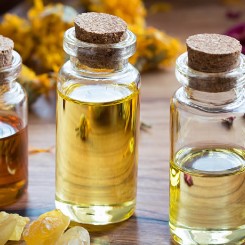 Essential Oils
Essential Oils
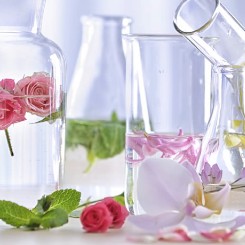 Hydrolats, Hydrosols, Floral Waters
Hydrolats, Hydrosols, Floral Waters
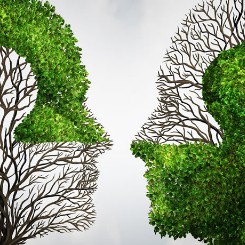 Synergies
Synergies
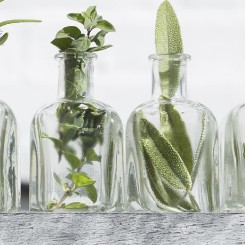 Herbal Oils
Herbal Oils
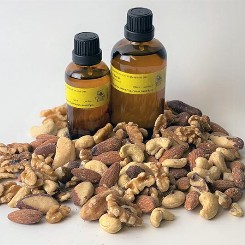 Vegetable Oils
Vegetable Oils
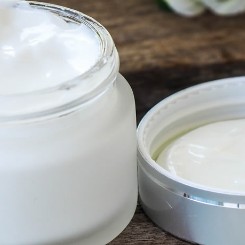 Bases
Bases
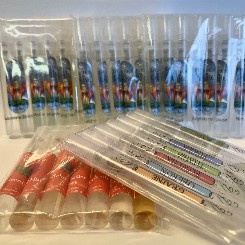 Books, Kits and Trial Packs
Books, Kits and Trial Packs
 Skincare
Skincare
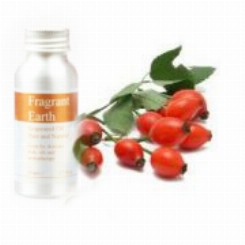 Body Care Oils
Body Care Oils
 Hair Care
Hair Care
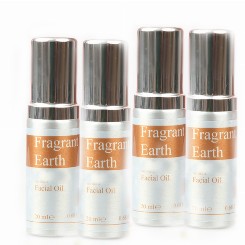 Facial Oils
Facial Oils
 Eco Bath
Eco Bath
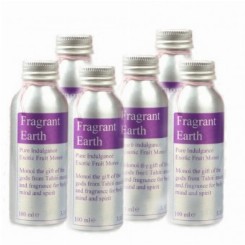 Pure Indulgence
Pure Indulgence
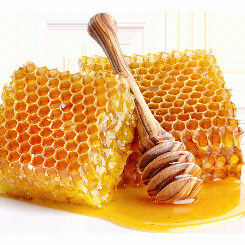 Honey, Beeswax & Propolis
Honey, Beeswax & Propolis
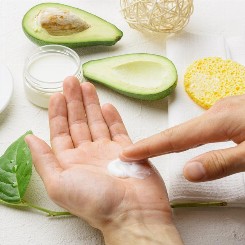 Handcream
Handcream
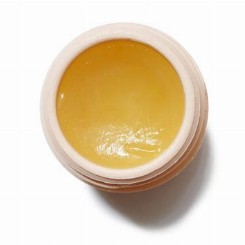 Balms, Salves & Ointments
Balms, Salves & Ointments
 Oral Care
Oral Care
 Feminine Hygiene
Feminine Hygiene
 Sun Care
Sun Care
 The Walton Cat
The Walton Cat
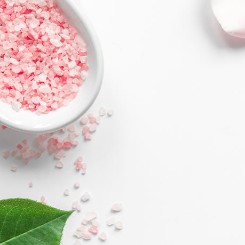 Bath Salts
Bath Salts
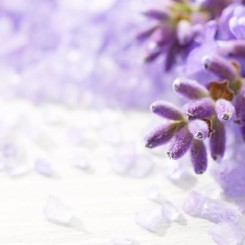 Somerset Lavender
Somerset Lavender
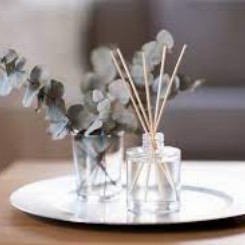 Diffusers
Diffusers
 Candles
Candles
 Shower Gel
Shower Gel
 Soap
Soap
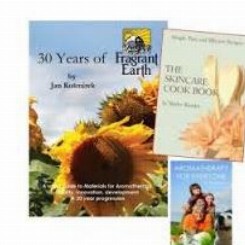 Books
Books
-245x-245x.jpg) Aromatic Waters
Aromatic Waters
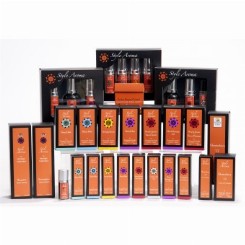 Style Aroma
Style Aroma
 Synergy Blends
Synergy Blends
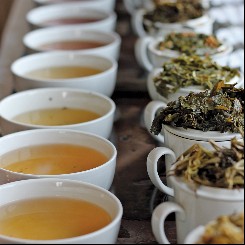 Miles Speciality Teas & Coffees
Miles Speciality Teas & Coffees
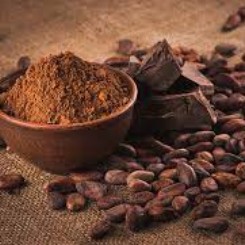 Chocolate one of life's passions
Chocolate one of life's passions